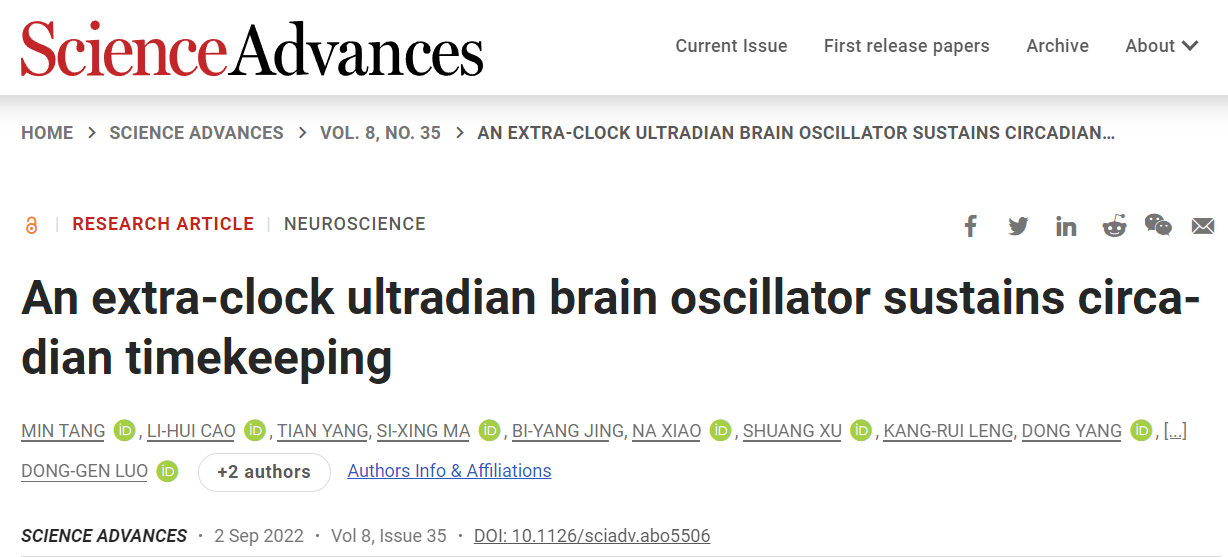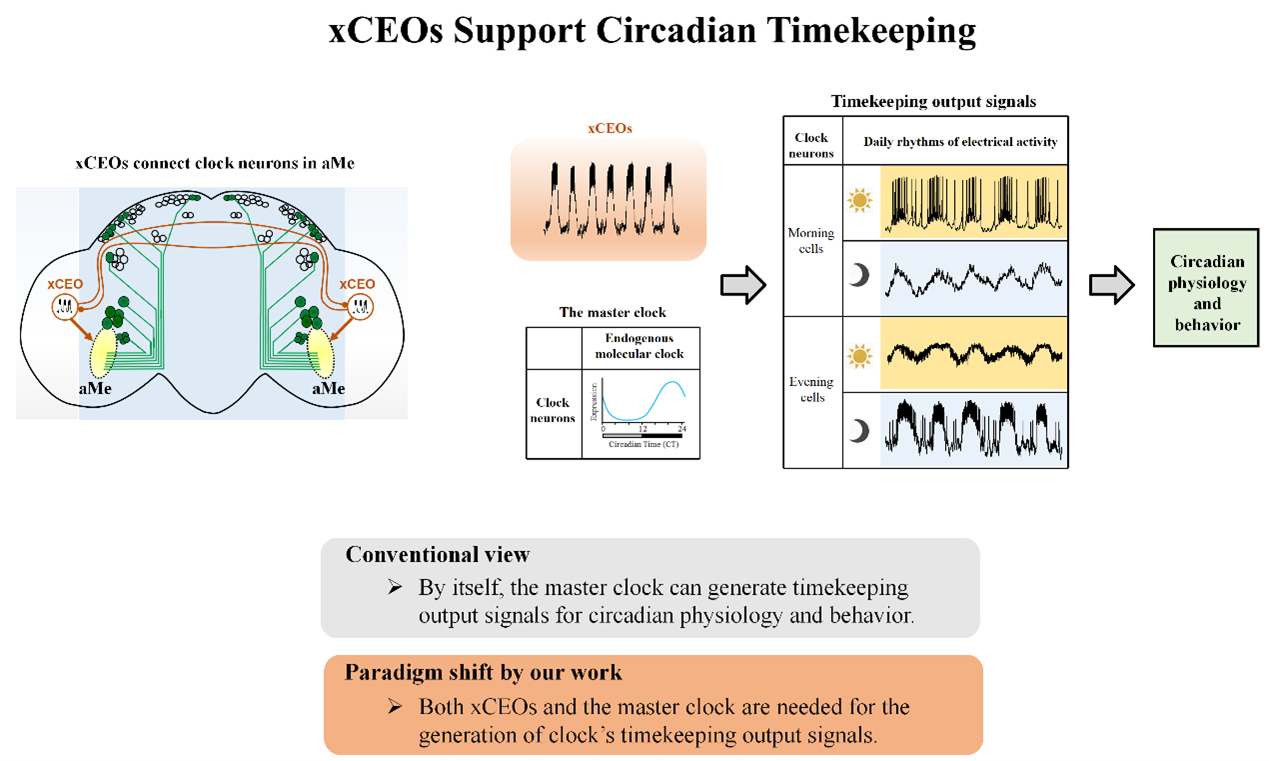Luo Dong-Gen and team discovers new electrical signal that sustains circadian rhythms
Sep 14, 2022
Peking University, September 14, 2022: On September 2, Luo Dong-Gen and his research team from Peking University’s School of Life Sciences, McGovern Institute for Brain Research, Center for Quantitative Biology, and Center for Life Sciences jointly published a research paper titled “An extra-clock ultradian brain oscillator sustains circadian timekeeping” in Science Advances.
The master circadian clock has long been regarded as self-sufficient in maintaining free-running timekeeping. [1, 2] Yet the breakthrough discovery by Luo Dong-Gen and his team has now challenged this traditional theory.
The team performed multiple-electrode patch-clamp recordings of the Drosophila clock neurons, and discovered that most clock neuron subtypes showed a pattern of synchronous ultradian burst firing. This solely relied on the synaptic inputs from outside the master clock. The synchronous burst firing was found to come from neurons that could oscillate self-autonomously. These neurons were later named as xCEO (extra-Clock Electrical Oscillator) by the team. The study hence revealed that the master clock is not self-sufficient, instead requiring the help of xCEOs to generate timekeeping of behaviour rhythms. Such timekeeping may actually be a core mechanism of the circadian clock in both insects and mammals.
Figure 1: xCEOs maintaining circadian rhythms
Contributions to the paper are as follows: Luo Dong-Gen as the corresponding author; Dr. Tang Min from PTN, Professor Cao Li-Hui from Capital Medical University and 2018 School of Life Sciences PhD student Yang Tian as the co-first authors; 2020 School of Life Sciences PhD student Ma Si-Xing, Dr. Jing Bi-Yang, Dr. Xiao Na, 2020 School of Life Sciences PhD student Xu Shuang, 2021 School of Life Sciences PhD student Leng Kang-Rui, former laboratory members Dr. Li Meng-Tong from Columbia University and Dr. Yang Dong from Scripps Institute as the major contributors to the paper.
The research was supported by the National Natural Science Foundation of China, Science and Technology Innovation 2030 (Brain Project), State Key Laboratory of Membrane Biology, Center for Life Sciences and Chinese Institute for Brain Research.
References:
[1] M. H. Hastings, E. S. Maywood, M. Brancaccio, Generation of circadian rhythms in the suprachiasmatic nucleus. Nat Rev Neurosci 19, 453-469 (2018).
[2] A. Patke, M. W. Young, S. Axelrod, Molecular mechanisms and physiological importance of circadian rhythms. Nat Rev Mol Cell Biol 21, 67-84 (2020).
Written by: Lee Xin Ying Rachel
Edited by: Meng Bin
Source: PKU News (Chinese)

